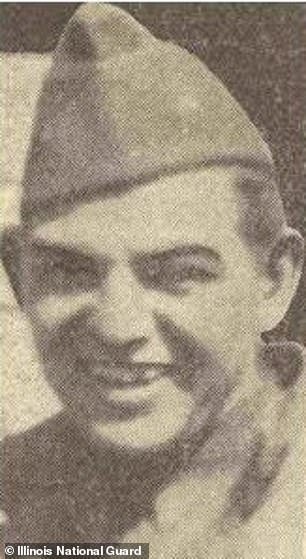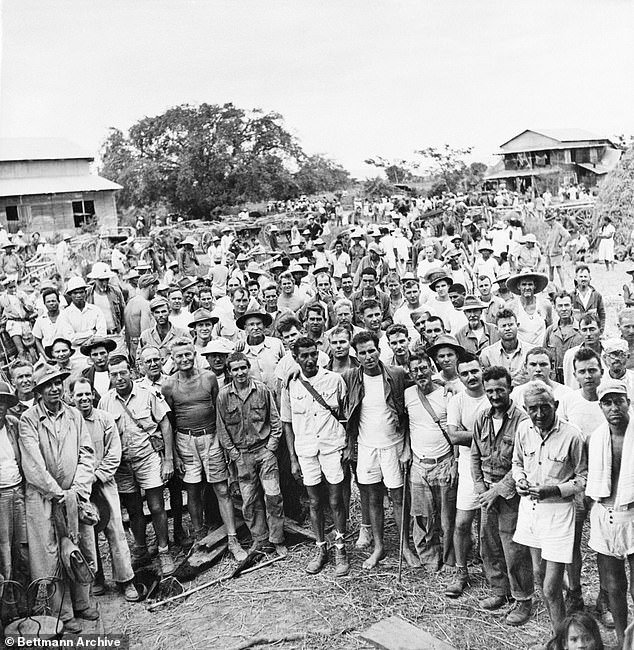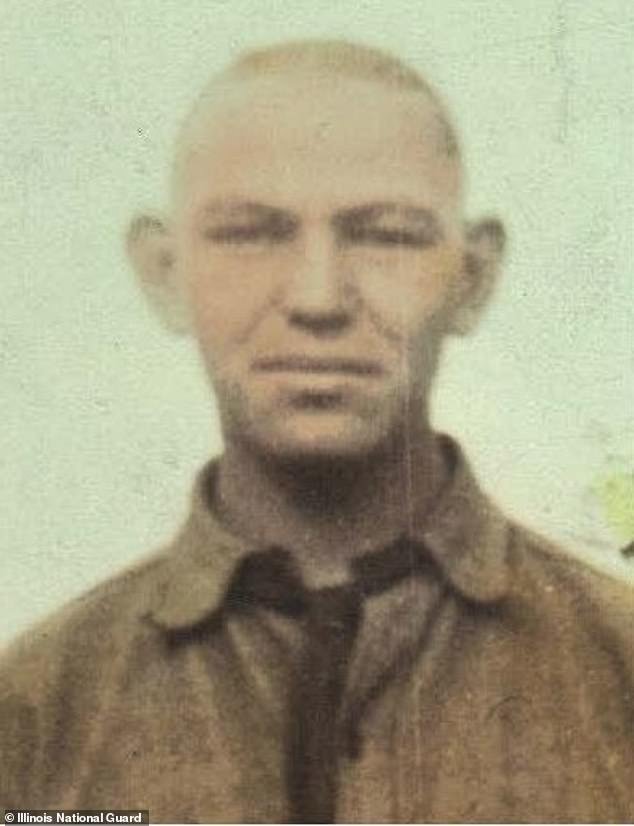Remains of long-lost World War II soldier, buried as ‘Unknown’, are identified as an Illinois man who died in a Japanese POW camp 80 years ago
The remains of a long-lost World War II soldier have been identified after the man died in a Japanese POW camp more than 80 years ago.
US Army Private 1st Class Harry Jerele, Illinois, died of pneumonia in the Philippines at age 26 and was buried in a mass grave along with other deceased prisoners.
Remains from that grave were excavated and analyzed in 2020 by forensic scientists who used anthropological analysis, circumstantial evidence and DNA analysis to determine that the remains belonged to Jerele.
After 81 years, the fallen soldier will be buried in his homeland in October.
US Army Private 1st Class Harry Jerele, Illinois, died of pneumonia in the Philippines at age 26 and was buried in a mass grave with other deceased prisoners

His niece, Rosemary Dillion, is his only surviving relative. “It’s a great feeling to finally make this identification,” Dillon said. “I just wish my mother and grandmother were here to witness his homecoming.”
“This is a miracle,” Rosemary Dillon, Jerele’s niece, said of the Defense POW/MIA Accounting Agency (DPAA) accounting for Jerele’s remains.
‘We have been trying to positively identify his remains for about ten years. It’s a long time ago. What a joyful occasion it will be when he is finally laid to rest in his homeland.”
Dillon, of Chicago, said she was a young child when Jerele left for military service, but remembers him as a quiet man who enjoyed singing and playing guitar. She said it is “a miracle” that his remains have finally been identified.
“It’s a great feeling to finally make this identification,” Dillon said. “I just wish my mother and grandmother were here to witness his homecoming.”
Jerele is from the small town of Berkeley, where approximately 5,300 people currently live, and was one of seven children born to Leopold Jerle and Mary Flori-Jerele on February 1, 1916.

Jerele is from the small town of Berkeley, where approximately 5,300 people currently live, and was one of seven children born to Leopold Jerle and Mary Flori-Jerele on February 1, 1916.
He joined the Army in September 1940 and served with Company B, 192nd Tank Battalion in the Philippines during the war, but was captured after the American surrender of the Bataan Peninsula on April 9, 1942.
On that day, American General Edward P King surrendered to Japanese General Masahrau Homma, who took approximately 75,000 prisoners – 12,000 Americans and 63,000 Filipinos – on the 65-mile Death March to the prison camp at Cabanatuan.
The details of the conditions under which American prisoners held at Cabanatuan lived and died were complicated, as were efforts to exhume and identify their remains after the end of the war.
More than 2,500 prisoners of war died in the camp during the war.
After the war, American Graves Registration Service (AGRS) personnel exhumed those buried in the Cabanatuan Cemetery and moved the remains to a temporary U.S. military mausoleum near Manila.
In 1947, the AGRS examined the remains to identify them.
Two sets of remains from Communal Grave 804 were identified, but the remaining two were declared unidentifiable, including that of Jerele.
The unidentified remains were buried at the Manila American Cemetery and Memorial (MACM) as Unknowns.
It wasn’t until 2020 that forensic scientists became involved to help identify the remains and return them to the men’s families.
And announced on April 18 that one set belonged to Jerele.
Jerele and his fellow soldiers of the 192nd Tank Battalion were the longest-serving American prisoners of war in World War II.
Company B, 192nd Tank Battalion, included 104 soldiers from Illinois.
The unit suffered 43 casualties during World War II, including 28 who died from illness, disease and wounds. Seven were killed when they sank aboard several Japanese POW ships, dubbed “Hell ships” by American forces. Eight were killed in action, and five were declared missing.

The details of the conditions under which American prisoners held at Cabanatuan (pictured) lived and died were complicated, as were efforts to exhume and identify their remains after the end of the war.

After 81 years, the fallen soldier will be buried in his homeland in October
Headquarters Company, 192nd Tank Battalion, included 31 Illinois Army National Guard soldiers, 19 of whom died from illness, disease and wounds, one died aboard a Japanese ship, and one was killed in action.
“The men of Company B, 192nd Tank Battalion, many from Maywood, were mostly children from the same high school,” the Illinois National Guard said in a statement.
“In 1940, a federal bill had passed, and they knew it was only a matter of time before they would be drafted into the military.”
“After hearing that the federal government was federalizing National Guard units for a one-year period of military service, these men decided to join the National Guard to fulfill their military obligation.”
Illinois Governor JB Pritzker said, “On behalf of the State of Illinois, I would like to thank everyone involved in bringing Harry Jerele home to his family in Illinois.
“The epic story of Maywood’s B Company, 192nd Tank Battalion lives on thanks to many who have never forgotten what these Illinois Soldiers sacrificed for their nation.”
